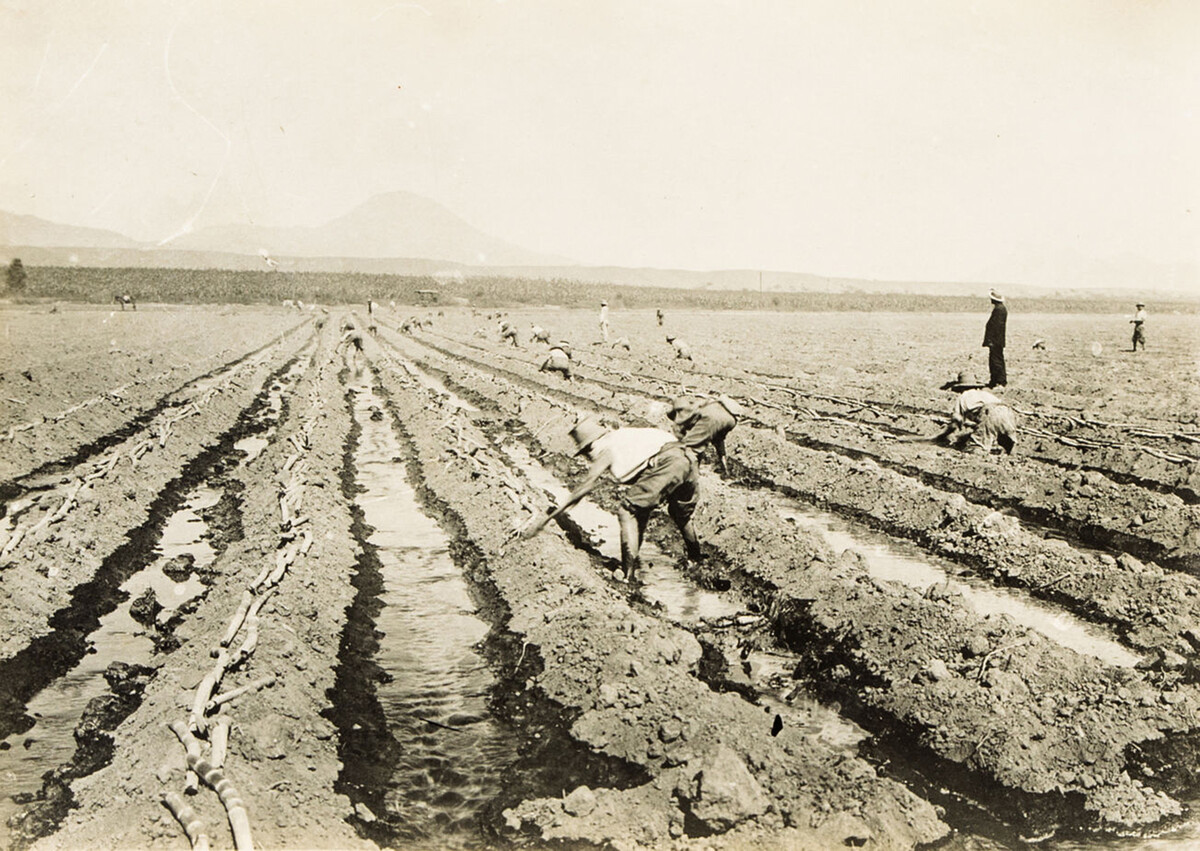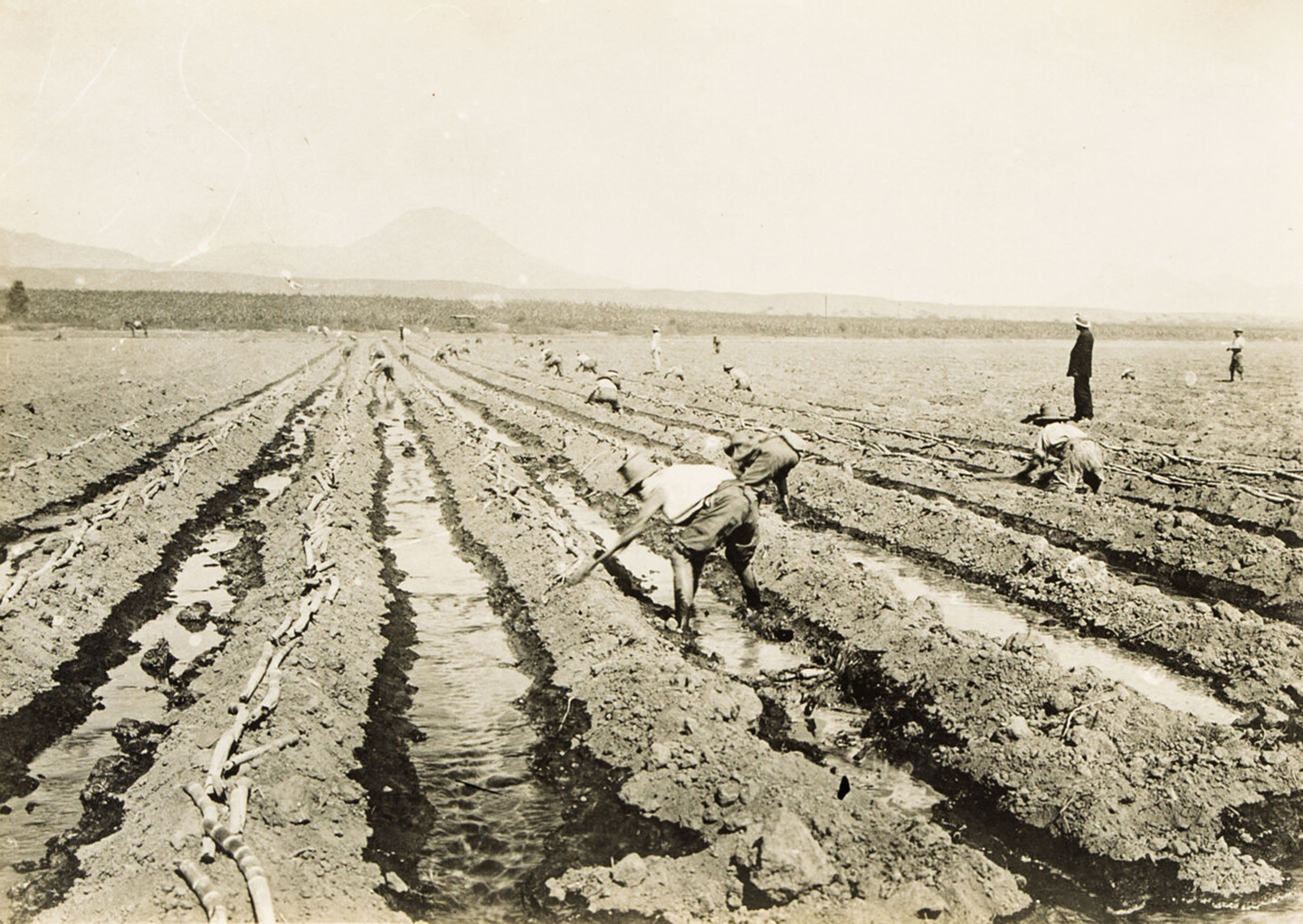“Chola” is one of the many haunted words of the Andes. It is impossible to locate for the North American reader, for whom “chola” recalls an image of certain Mexican-American women who embody fierce dissent and excess. The chola of the South looks quite different, although she has her own ways of conflicting with society. “Chola” is a racial slur that communicates disgust with indigenous people or traits. When hurled at women it signals their/our promiscuity, whorishness, and unrapeability. “Chola” is deployed with the mutability of raciality. Growing up, classmates and relatives who inhabited nicer neighborhoods and had fairer skin derided me by calling me “chola.” In markets, on public transportation, and everywhere, I witnessed the daily humiliation of myriad women who looked or were perceived as more chola than I was. I was never treated with such levels of contempt. Despite my relative privilege, I, too, was brought up feeling the violence of the utterance, in fear of embodying the low-class, excessive, puta, and distasteful chola figure.
This manifesto, displaced, fragmented, painful, and hopeful, goes out to all of us who were shocked by the insult and simultaneously knew in mind and body the urgency of embracing our chola subjectivity. We intuited that as cholas we were already a threat to the system. We were illegitimate, yet we would prevail. Today, manifestations of chola politics are in fact challenging coloniality, patriarchy, and individualism. From this vantage, I venture to sense and reflect on a chola porvenir.


Workers and landowners, Hacienda Casa Grande. License: CC BY-NC-ND 2.5 PE
The futurity of cholas is recalled by unearthing a silent past. This text utilizes the manifesto’s currency—its European, avant-garde history—to create a multifarious path for us. Its anti-programmatic methods deal with history, and, most crucially, with intimacy. My ancestors’ embedded stories of bastardy, labor, joy, impropriety, drunkenness, care, and love are superimposed, made explicit. While I recognize the dangers of self-exploitation, here I prefer to manifest the intergenerational pain of the unsaid so that it might finally let itself out.
what is it to be a chola?
who are these cholas?
chola de mierda—made-out-of-shit chola
chola maldita—cursed chola
chola cochina—pig-like chola
sucia—dirty
chola puta—chola whore
perra—bitch
brown-skinned chola from the Andes
wide shoulders
ample chest to capture the
scant oxygen of
the mountains
Written in a foreign language, written as an alien in a hostile territory, ironically situated in a land that only nominally gestures to indigeneity, this manifesto is drafted from the non-chola setting of the university, which for a long time has expelled us both symbolically and materially. Universities North and South alike were meant to exterminate us. I write from the contradiction of being inside the institution and aiming toward a noninstitutional language—toward an understanding of feeling rather than simply asserting.
In January of this year, heavily armed police broke into San Marcos University in Lima, destroying entrances and walls with a tank. At that time, the facilities of this five-hundred-plus-year-old institution hosted hundreds of people from the provinces who had marched to Lima demanding new elections and accountability from the illegitimate government that had used disproportionate force against protesters, injuring and killing them. The protestors were dispossessed and murdered like only cholos and indians can be.1
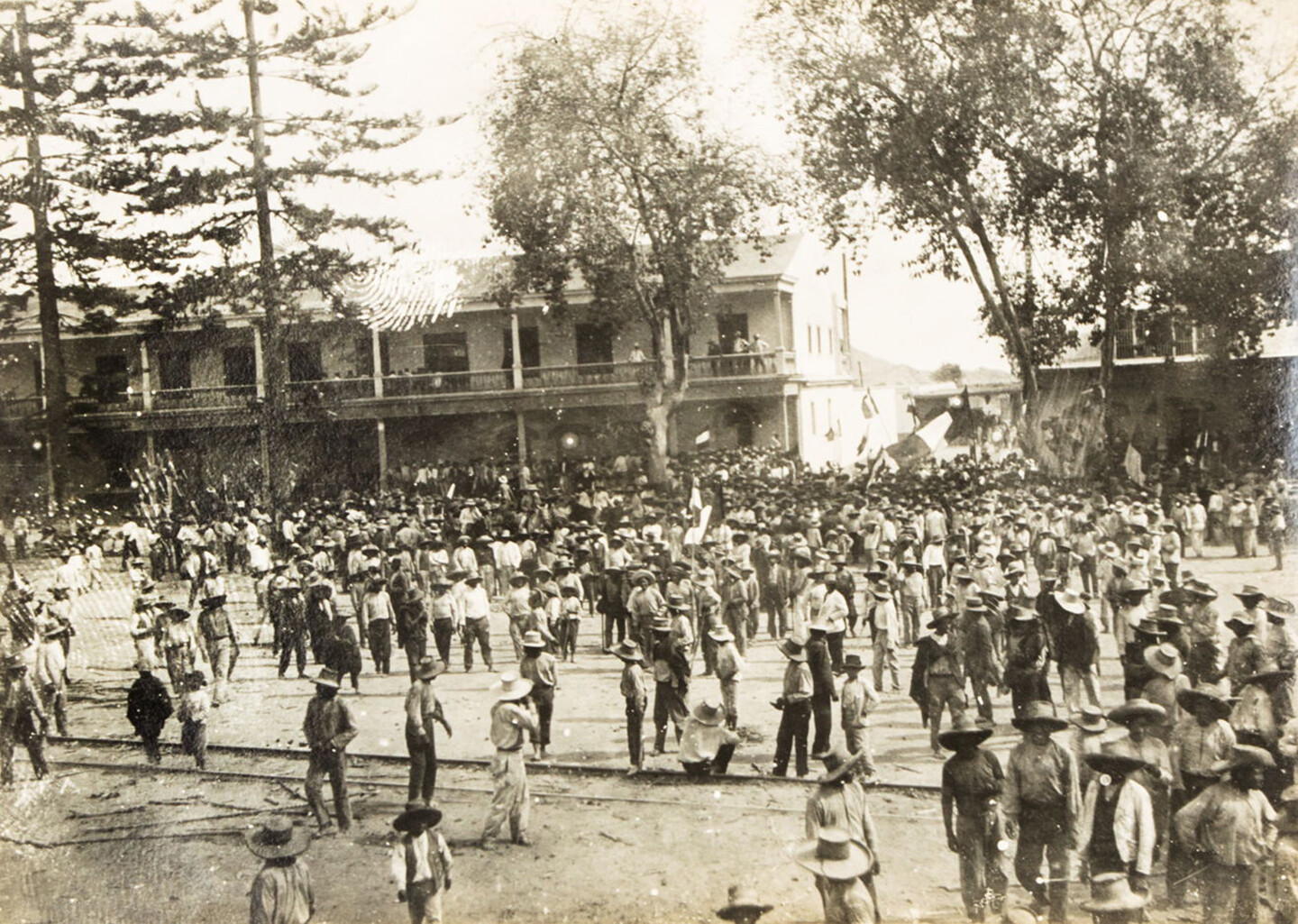

Strike, Hacienda Casa Grande. License: CC BY-NC-ND 2.5 PE
In the late 1500s, the chronicler El Inca Garcilaso de la Vega traced the etymology of the word “cholo” back to an unspecified language of the Caribbean. He explained that “cholo” was a rogue mutt vilified by the Spaniards, who used it as an insult in the Viceroyalty of Peru, where cholos were the progeny of mulattos, who themselves were the result of “a black man by an indian woman, or of an indian man by a black woman.”2
The men who cited this etymology in the 1980s to analyze the migration of provincial people to the city of Lima conveniently erased the mulattos from the word’s origin and, with it, Blackness. “Cholo” was whitewashed of everything but its supposed indigenous and white creole origins.
the cholo is whitewashed
cholas are implicated in the whitewashing
“mejorar la raza” (to better the race) is a womb mandate
I, too, am a chola who has a fair-skinned child
negating the propagation of whiteness
I grew up amidst the war. Fear in the air, scotch tape Xs covering the windows. The TV played images of car bombs, peasants crying, indigenous massacres, brown soldiers killing their brown brothers. And poverty. My abuela, the head of our extended household who hosted two of her children plus their children, and the children of her other four children who came by after school, always walked around in a hurry, preparing meals and double-checking that everyone was fed. All while securing enough cash for tomorrow’s meals. We went to the market every day. That was how we lived—not month to month, but day to day.
cholas like the market
cholas are the market
She was energetic. Short. Round. With indigenous features and fair-skinned like the other cholas from her region in the northern part of the country. She was the illegitimate daughter of a landowner, a bastard chola, born out of wedlock, as we often are. She used to embrace me, calling me “mi chola.” I felt best when in her arms or laying down in her lap. Her dress would exude smells of garlic and traces of urine. I was her chola. It soothed me to know I was a chola under those circumstances. I was the only chola amongst twenty or so cousins. I was one of the darkest ones. One of the most chola-looking.
chola suited me because
I was the most rebellious.
My grandma, Yuma, was defiant. I was ok with being her chola because I could sense that she recognized herself in me. I situate the force of my cholaness in her. Not just because she was a chola blanca who was brought up in a hacienda and knew how everything bore fruit: beneath the soil, in bushes, crawling, on trees. She helped me see the chola in myself with tenderness, planting the seed of self-love. She helped me experience all of that with harshness, humor, and a bit of insolence, too, because cholas need to be tough in order to nurture and love.
Casa Grande, Laredo, Cartavio, Chucuito, Chiquitoy are geographies in my grandmother’s mouth. Names of her childhood that populated mine. They were sugar plantations that showed her the importance of politics and ideology—the ecosystems of daily injustice. The ex-guerrillero Enrique Béjar recalls that the motto of Casa Grande (Big House) was “Pray, Work, and Keep Quiet.” Later in life I would visit archives to see pictures of those haciendas that violently, and in every possible way, subjugated indians, Black people, cholos/cholas, and, after the abolition of slavery, Chinese coolies. They were like family albums to me. My chola self is rooted in these hacienda ecologies.
My grandma told stories of these places, and her speech was a thread. In a grey city at war, in a low-income neighborhood, it connected me to the land and to another time of poverty and displacement.
cholas are out of place
Because she was the youngest and the only woman, my grandma’s three older brothers spoiled her. Legitimacy pressed against those relations: they were legal heirs born within the yoke of sanctified marriage. Brought up as landowners, they loved her a su manera. They were not the children of a chola mother. Their mother was a señora. So Yuma lived in between their protection, paternalism, silent reproach, and unvoiced demands. She was invited to weddings and parties only to remain in the kitchen helping the help. She didn’t disclose this part when she told stories from her childhood or about them. I had to wait until my aunts and uncles were tipsy and plucky enough to talk about such social arrangements. I started to fantasize about those parties: I could picture the better-dressed brothers and their families, rarely introducing her to friends, never presenting her as their sister. Servitude ran in her blood. I imagine the rare occasion of her raising a toast with everyone, feeling alone.
I am a resentful chola
My grandma’s quiet, self-destructive, and biggest rebellion was to marry my grandfather, Manuel. He was a mixed-race, well-read bohemian. Tall, black, straight hair. Manuel dealt with his own traumas of dispossession silently and liquidly. His great-great-grandma was a slave. Manuel’s dad was a mulatto. We don’t know much about my grandpa’s mom other than her being mixed-race and perhaps having a Portuguese relative. Our last name, Ulloa, is rare amongst poor Limeños. Manuel was a talented carpenter who left jobs unfinished to go to the cantina and binge drink for days in a row. The family referred to these episodes as “está de gira,” or “he is on tour,” as if he were a musician. We all knew he was a troubled artist of sorts.
He was not a violent alcoholic aside from the violence that alcoholism already implies. His tours were worrisome and shameful for everyone to different degrees. These events were also marked by humor and rebellion. We were proud of his drunken tendency to say outrageous shit to everyone, especially to those hacendados brothers of my grandma, to the illegitimate owners of everything.
Around 1615, the Peruvian interpreter Guamán Poma listed cholas amongst many taxonomic presences of the colonial world.3 Cholas needed to be expelled from indian towns because of their polluting capabilities. Cholas tended to mix, not caring with whom. They contributed to the racial confusion of the colonial world that, in his view, triggered the wrath of the colonizers and justified their crimes. Guamán Poma had a predilection for registering women “becoming whores,” birthing mestizos and other “bad races.” He, a fervent catholic, drew a big slit on the chola in his book in lieu of a fearless puta vulva, accompanied by a big anus for us to imagine her carnality.
cholas like sex
cholas are deviants
cholas have big genitals
Against the inevitable mandate of motherhood, of reproduction, of pleasing men, to be a lesbian was a menace. Eight-year-old me, with short spiky hair, dirty knees and face, a square-looking tomboy, a gordita, already knew this. They would call me machona (butch), Juliana,4 Chacalón.5 These two last “insults” come from depictions of dark-skinned migrants and cross-dressers in local popular culture of the 1980s. They suggested that I was not only man-like (ahombrada), but that I was also too brown, too streetwise, not enough of a señorita. The message: a brown girl has to make an effort to look like a girl. Having this type of brownness meant existing outside of feminine beauty and also outside of womanhood. It implied suciedad and vulgarity. Decades later, I would find Gloria Anzaldúa’s writing on racialized machonas in her essay “La Prieta.” In her family, like mine, Brown, Queer, and woman is seen as a dangerous conjunction that must be restrained.
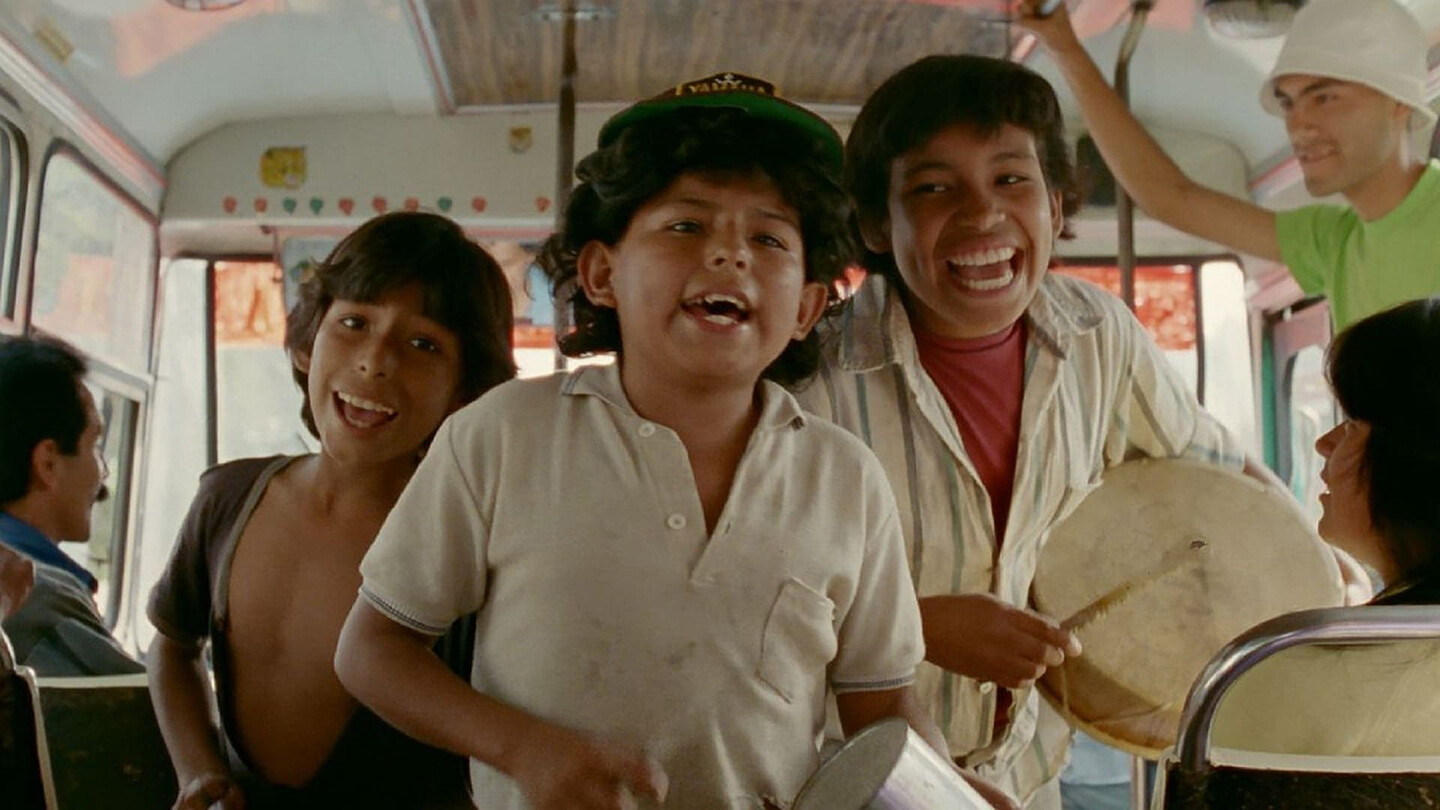

Juliana, directed by Fernando Espìnoza and Alejandro Legaspi, 1989.
In the nineties, a group of friends and I entertained the idea of creating a collective called Klitoria. The clitoris and its pleasures were nowhere in our social life. Only poetry created by women (obviously) dared to deal with, explain, and share experiences of orgasms. They were of course mocked by critics, writers, and peers. Even within the lines of that poetry, we felt like outsiders, lacking cultural capital. Some of us were first-gen students, others first-gen Limeñas. Despite being young we had grand dame aspirations; we called our literary journal Casa de Citas (whorehouse).
cholas are conchudas—cholas are bold
“conchuda” means to have a big concha or pussy
A veteran of the long war of the 1980s, who considers himself very “criollo”—versed in Lima traditions of whiteness—said that cholas’ big conchas were capable of hiding (at least) two sticks of dynamite. After this “discovery,” he made sure to include the stripping of cholas in his soldierly endeavors.6
cholas are terrorists
cholas hide
cholas take advantage of
“Perricholi,” a combination of “bitch” and “chola,” was the nickname of an actress (1748–1819) who was famous for being the lover of a Spanish viceroy. Ricardo Palma, a writer and a national hero, wrote that she was “a female of extremely scarce beauty.”7
cholas are ugly
Palma also mentioned: “it seems that mister viceroy was not a man of a very delicate palate.”
cholas are desired
Cholas’ big culos were paraded in the back pages of political magazines written by serious non-cholo journalists. Naked cholas were all over tabloid covers sold at bus stops in the neoliberal Lima of the 1990s.
cholas are consumable
Limeño writers fabulate about “comerse a una cholita,” fucking a well-shaped cholita who they think of as a gold-digger. These cholitas are players and get played by white men. They are also a white-guy fantasy.


Felipe Guaman Poma de Ayala, El corregidor y padre tiniente anda rrondando y mirando la güergüenza de las mugeres. Det Kongelige Bibliotek, Denmark.
Cholas do bite back. Such accounts are just now emerging. Cholas enacting vengeance in bed and outside of it are creating new imaginaries of racial and trans feminist revenge. Cholas are showing their treacherous nature through cuirnes/queerness and post-porn aesthetics. Their actions recreate an imagination of self-defense, pleasure, and blatant lust. Cholas making love to other cholas, cis, trans, and nonbinary. One of the most resonant feminist chants of recent years is “chucha con chucha, esa es mi lucha” (pussy against pussy, that is my fight).8
cholas can be unbeatable
Three (un)related scenes of chola endurance
In March 2017, the image of a woman covered in mud, struggling to extract herself from a sludge avalanche of destroyed houses, debris, and even a drowning cow, travelled the world in the ephemeral form of international news coverage of natural disasters. Her name was Evangelina Chamorro, a Peruvian woman living below the poverty line. She was twenty-seven years old back then. Just seconds before being dragged into this muddy torrent caused by a flash flood, she was feeding her house pigs.
The widely used Quechua-word “huayco” gestures towards the familiarity of pre-Hispanic peoples with the extreme natural phenomenon that it describes. Using her own physical strength against all odds, Evangelina emerged from the sludge under the perplexed gaze of multiple witnesses from the sidelines. Smartphones in hand, they recorded Evangelina’s fierce will to survive. In Peru, Evangelina was easily forgotten, replaced by the perpetually unstable political system. Internationally, her fight was just one of many to come against multiplying ecologic disasters.9
Evangelina’s self-rescue and individual triumph over the huayco have frequently appeared in my memory as a sort of afterimage, a rematerialization of figures of chola resilience. Rather than remaining fixed on the specific circumstance surrounding this El Niño avalanche, in my vision Evangelina unequivocally symbolizes chola endurance—the very inner-force that resists engulfment.
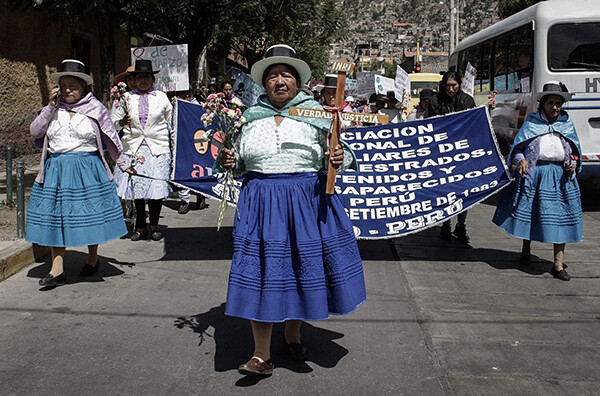

Ayacucho protests against the Peruvian army, 2023. Photo by Chola Contravisual.
From 2015 to 2018, femicides and violence against women increased across Peru. And it is precisely during this time that many feminist and trans feminist colectivas strengthened their bases, alliances, and discourses, for example reformulating a new feminist vocabulary to talk about race amongst cholas: marrón (brown), negra (Black), and Afro-Peruvian. Deploying these words in everyday speech and social media to define themselves, women unsettled a long history of silence about race, becoming unafraid of “seeing the race in the mirror,” as Laura Rita Segato suggests in reference to the larger Latin American region.10 This moment of self-discovery also resonates with revelations on race across the Americas, for example, in José Esteban Muñoz’s statement on brownness as “a kind of uncanny persistence in the face of distressed conditions of possibility.”11
Peruvian cholas are becoming the huayco.
In 2016, they became a social avalanche in the Not One More marches against femicide.
This year, provincial women, leaders, supporters, protesters, and public speakers demonstrated strength, courage, light. They have schooled us in resilience. They have showed all of us how to love in the face of death.12 How to show care despite the horrible myriad racial slurs they were subjected to in the city. The physical pain of tear gas. The police chasing them down. The hurtful looks of those who conform to a destiny of mental servitude.
I am aiming here for a dialogue of truncated origins,
wanting and listening inside the chest of those who love.
The armed forces had express orders to assassinate protesters. They killed forty civilians using assault weapons and lead pellets. For a full report on the events, see Humans Right Watch →. For a varied cultural assessment of the events, read the article series “The ‘Marcha a Lima’ against the Denial of Modern Political Rights,” edited by Marisol de la Cadena for Fieldsights, March 2023 →.
Garcilasco de la Vega, Los Comentarios reales de los Incas (Ayacucho, 1976).
Felipe Guamán Poma de Ayala, El primer nueva corónica y buen gobierno (1615/16) (Biblioteca Ayacucho, 1980). The DET KGL Bibliotek in Copenhagen has a digital facsimile of the original manuscript →.
Juliana (1989) was a movie that portrayed a girl who cross-dressed to survive living in the streets →.
Chacalón was a leading musician of Peruvian cumbia, or chicha, music in the eighties. He was born in a Lima shantytown and came from an Andean family.
Carlos Iván Degregori and José López Ricci, “Los hijos de la guerra: jóvenes andinos y criollos frente a la violencia política,” in Tiempos de ira y de amor (Desco, 1990).
Ricardo Palma, Tradiciones Peruanas (Montaner y Simón, 1893).
See the video made by the visual collective and activist platform Chola Contravisual →.
See →.
Laura Rita Segato, La crítica de la colonialidad en ocho ensayos: y una antropología por demanda (Prometeo, 2015).
José Esteban Muñoz, The Sense of Brown (Duke University Press, 2020), 4.
In Marisol de la Cadena’s series for Fieldsights, I offer a more detailed trans feminist reading of these last protests: Olga Rodriguez-Ulloa, “Cholas Fighting Political and Visual Struggles,” Fieldsights, March 30, 2023 →.
